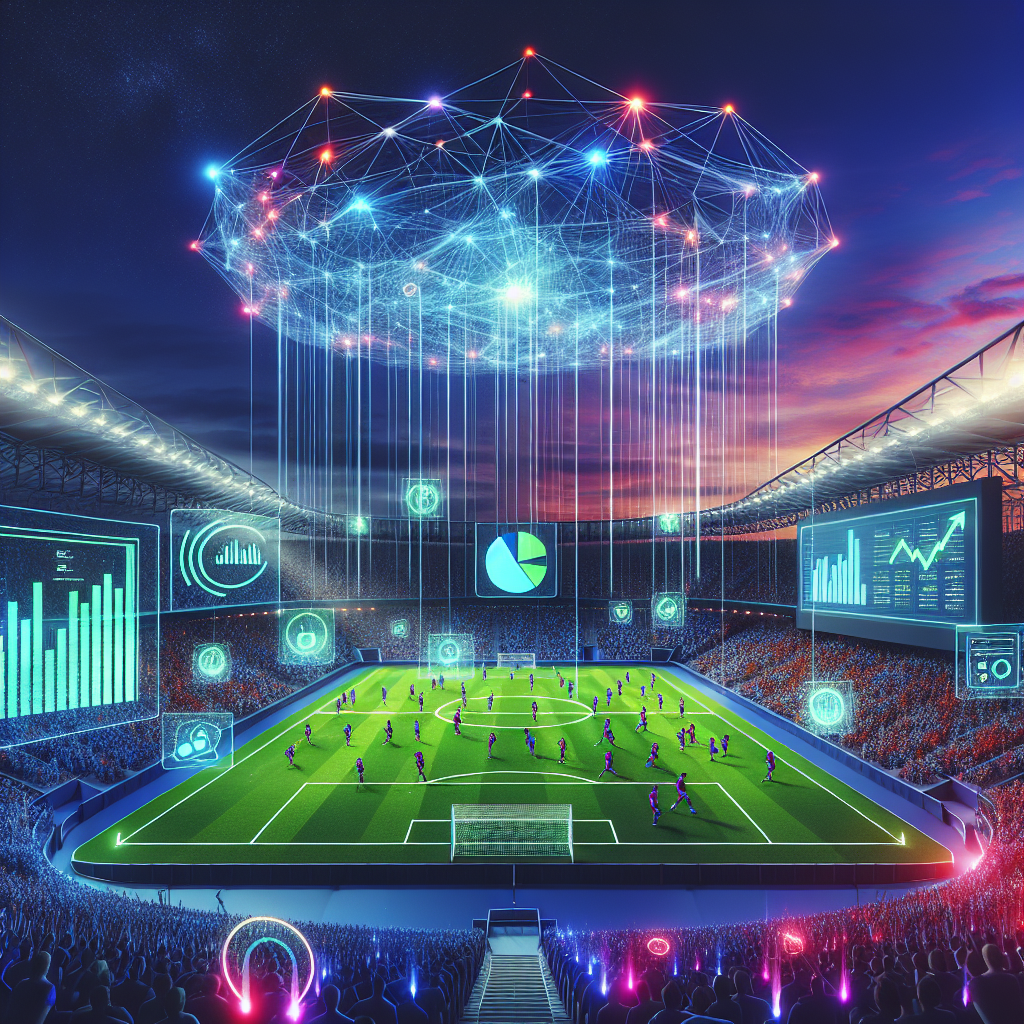Data Science in Sports Analytics

Data Science in Sports Analytics: Enhancing Performance through Advanced Metrics
In the high-stakes world of professional sports, every advantage counts. Whether it’s a split-second decision on the field or an inch gained during training, small improvements can make all the difference between winning and losing. This is where data science and sports analytics come into play—transforming how athletes train, coaches strategize, and teams manage performance.
From player performance analysis to injury prediction and fan engagement, these fields are reshaping competitive athletics. Dive into this blog post to discover how data science enhances performance, optimizes strategies, and enriches the sports experience for everyone involved.
The Role of Data Science in Sports Analytics
1. Player Performance Analysis
One of the most significant applications of data science in sports analytics is player performance analysis. Teams leverage advanced statistics to evaluate players’ strengths and weaknesses, identify areas needing improvement, and tailor training regimens accordingly. Metrics such as shooting percentages, speed, acceleration, and agility are meticulously tracked. In basketball, for instance, player tracking technology offers detailed movement data that reveals patterns in player positioning, passing efficiency, and defensive strategies.
Imagine an NBA team using this data to understand how a key player’s movements affect their teammates’ performance. This level of insight can refine plays and enhance overall team dynamics. For example, the Golden State Warriors have used advanced analytics to revolutionize their offensive strategy by emphasizing ball movement and spacing based on player tracking data.
2. Injury Prediction and Prevention
Injuries are inevitable in professional sports, but data science offers powerful tools to mitigate risk. By analyzing historical injury data, player workload, training intensity, rest patterns, and other relevant factors, teams can predict when players might be at risk of getting hurt. Machine learning algorithms can identify correlations between these variables and injury occurrence, providing insights that allow teams to take preventive measures.
For example, the NFL uses predictive modeling for athlete performance to forecast injuries based on player usage and historical trends. This approach helps in designing personalized training programs that reduce the likelihood of injuries, ensuring athletes stay healthy and perform optimally. The Cleveland Browns, known for their proactive injury prevention strategies, use data analytics to monitor player health metrics in real-time, reducing the risk of injuries.
3. Game Strategy Optimization
Data science plays a crucial role in optimizing game strategies. Coaches use analytics to analyze opponents’ playing styles, identify weaknesses, and develop targeted strategies to exploit those vulnerabilities. Advanced metrics like expected goals (xG) in football or player tracking technology in basketball provide valuable insights that inform strategic decisions about positioning, ball movement, and defensive setups.
During the FIFA World Cup, teams employ machine learning in game strategy to analyze opponent data, predict play patterns, and adjust strategies on the fly. This data-driven approach can mean the difference between victory and defeat. For instance, during the 2018 World Cup, Germany used advanced analytics to predict their opponents’ weaknesses and adjusted their defensive tactics accordingly.
4. Fantasy Sports Insights
For fans engaged in fantasy sports leagues, data science provides a competitive edge. Platforms use analytics to predict player performance based on historical data, current trends, and even social media sentiment. These predictions help players make informed decisions about their teams, enhancing their chances of winning. FanDuel and DraftKings are two prominent platforms that leverage advanced analytics to offer fantasy sports recommendations.
5. Fan Engagement and Experience
Data science also enriches the fan experience by personalizing content recommendations and creating more interactive events. By analyzing viewer behavior, preferences, and feedback, teams can tailor their digital presence to engage fans more deeply.
For example, a football club might use analytics to understand which social media posts resonate most with their audience and then create more of that type of content. This engagement fosters a stronger community around the sport. The Dallas Cowboys have successfully used analytics to increase fan engagement by providing personalized content through their mobile app.
Predictive Modeling for Athlete Performance
Predictive modeling in athlete performance is a game-changer. By analyzing vast amounts of data, including player stats, training regimens, and even sleep patterns, coaches can anticipate potential issues before they arise. These models can predict the likelihood of injuries or performance declines based on various factors.
For instance, the San Antonio Spurs have used predictive modeling to optimize player rotations and minimize injury risks. By analyzing game data, practice metrics, and rest periods, the team can make informed decisions that keep players healthy and at peak performance levels.
Sleep Analytics
Sleep is a critical component of athletic performance. Predictive models that analyze sleep patterns can help coaches understand how fatigue affects an athlete’s on-field performance. Teams like the Denver Broncos use wearable devices to track athletes’ sleep quality and duration, providing data that informs recovery strategies.
Machine Learning in Game Strategy
Machine learning algorithms are transforming game strategy by analyzing vast amounts of historical and real-time data. These algorithms can identify patterns and trends that might be missed by human analysts, offering coaches valuable insights into optimal play calls and defensive setups.
Real-Time Analytics
Real-time analytics provide coaches with immediate feedback during games, allowing them to make informed decisions on the fly. For example, the New England Patriots use real-time analytics to adjust their game strategy based on opponent tendencies and current game situations. This level of adaptability can give teams a significant competitive edge.
Video Analysis
Video analysis is another area where machine learning excels. Advanced algorithms can analyze hours of game footage to identify key plays, player movements, and strategic patterns. Teams like the Miami Dolphins use video analytics to prepare for opponents by breaking down their strengths and weaknesses.
The Future of Data Science in Sports
As data science continues to evolve, its impact on sports will only grow, making the future of competitive athletics more exciting than ever. New technologies such as wearable devices, augmented reality, and advanced imaging techniques are providing even richer data sets for analysis.
Wearable Devices
Wearable devices that track player biometrics in real-time can provide valuable insights into an athlete’s physical condition and performance levels. Teams like the Philadelphia Eagles use these devices to monitor players’ heart rates, oxygen consumption, and other vital signs during training and games.
Augmented Reality
Augmented reality is being used to enhance player training by overlaying data on a player’s field of vision. This technology can help players visualize game plans, understand their positioning, and improve their decision-making skills. The Minnesota Vikings have experimented with augmented reality tools to improve player performance.
Advanced Imaging Techniques
Advanced imaging techniques such as MRI and CT scans are being used to diagnose injuries more accurately and develop personalized treatment plans. Teams like the Los Angeles Dodgers use advanced imaging to monitor player health and recovery, reducing the risk of re-injuries.
Conclusion
Data science is revolutionizing professional sports by enhancing performance, optimizing strategies, and enriching fan experiences. Whether you’re an athlete looking to improve your game or a fan eager for a deeper engagement with sports, data science is here to enhance your experience. Stay tuned as this field continues to shape the future of competitive athletics.
The integration of advanced analytics into sports has not only transformed how teams compete but also how fans interact with their favorite athletes and teams. As technology continues to advance, we can expect even more innovative applications of data science in sports, making the games we love more exciting and rewarding for everyone involved.

